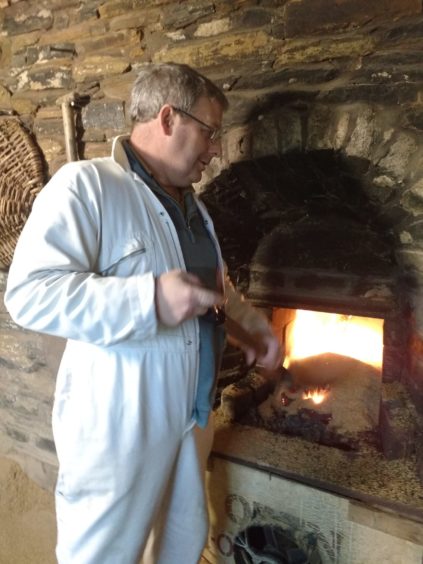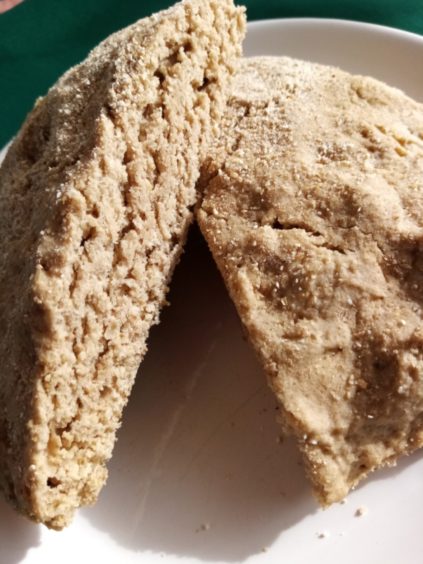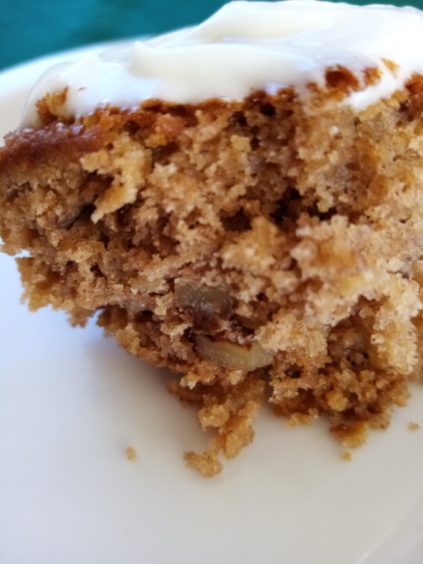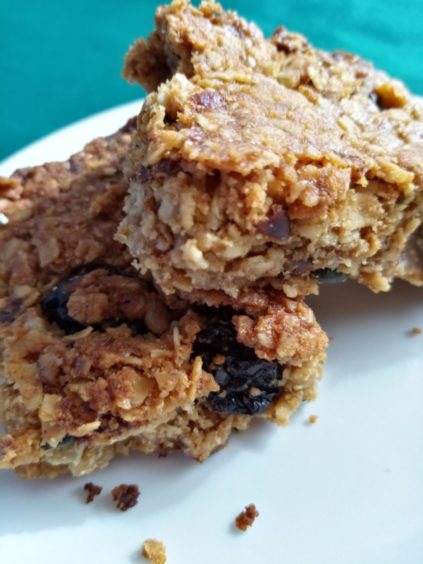Susan Welsh brings us a “peedie” guide to Orkney’s bere and beremeal – and some recipes to use it in our kitchens.
You’ll remember earlier this year, supermarket shelves were cleared of flours and all manner of essential ingredients as people rediscovered a passion for baking.
Those quickly bored of banana bread went in search of more unusual, traditional ingredients and found what they were looking for in Orkney – beremeal.
Ali Harcus, miller at the Barony Mill – the most northerly working watermill in Britain and only mill in Orkney – reports demand for beremeal has been “phenomenal” of late, with a huge increase in inquiries from people wanting to know more about the product and what they can do with it.
Someone who knows about cooking and baking with beremeal is food writer Liz Ashworth.
She lives at Lhanbryde in Moray, although she has long family connections to the islands.
“Some of the first grains of bere were found on the shores of the Sea of Galilee some 8,000 years BC, and how it came to be a staple crop in Orkney is quite an interesting story,” said Liz
“During the Neolithic revolution, farmers started to cultivate crops instead of just being hunter-gatherers, and because of that they needed more land to grow crops.
“As the population settled and grew, and the Ice Age diminished, they moved out of what’s known as the Fertile Crescent – a region in the Middle East that takes in countries such as Palestine and Egypt – and spread out in all directions across the world.
“A crop very similar to bere is grown in Tibet, where it’s called tsampa.”
Origins
A grain resembling bere was said to be eaten by Cleopatra, Tutankhamun, the Queen of Sheba and Solomon, while Roman gladiators were known as Hordearii (barley men) because their strength was attributed to a vegetarian diet based on barley.
Bere eventually found its way to Orkney where it became an essential crop, used for all manner of purposes.
“Orcadians survived by eating a bere bannock, made fresh, two or three times a day, but also used the straw for roofing, to make chairs, bedding, even straw boots,” said Liz.
Bere barley was, at one time, grown across Britain but it gradually fell out of favour.
Liz added: “It’s difficult to harvest as the beard (skeggs) sticks to everything. If it comes indoors you can never get it out of your carpet.
“It also makes you itchy, so school kids used to make itching powder with it!”
Visit Orkney and you’ll see fields of bere grown by an agricultural contractor on behalf of the Birsay Heritage Trust, which runs Barony Mill.
“Orkney is the only place in Britain where it’s grown commercially, and the amount being grown has increased greatly of late,” said Liz.
Bere barley
Known as a 90-day barley, the crop grows better in poor soil. Bere barley has six rows of grain in the head caused by a genetic mutation. Its higher protein content makes it valuable as a food crop compared with modern barley, which has two rows of grain in the head. It is higher in carbohydrate and is used for malting to produce beer and whisky.
Once bere is harvested it’s brought to the mill, which has hardly changed since it was built in 1873. It’s situated at Boardhouse, in the north-west of Birsay, which was the seat of power during Norse and medieval times.
The bere is kiln dried, then the grains are ground and turned into an ancient type of flour, beremeal.
“I consider myself very lucky to have known the former miller, Rae Phillips, who sadly died two years ago,” said Liz. “He had a huge knowledge of beremeal and his story is told in The Book of Bere.
“It is good that, together, Rae and I could record this knowledge otherwise it would have died with him.
“He gave so much to ensure Orkney’s unique grain will not be forgotten and worked tirelessly until his death in August 2018. It was a privilege to know him and to have the opportunity to share his story.”
So what is it about beremeal that makes it so good?
“It’s very nutritious – several in-depth analyses have been done which prove that Orkney’s unique grain is nutritionally valuable,” said Liz.
“It is low in gluten, but not gluten free, and has quite a nutty flavour.
“It’s versatile and available in three varieties – coarse, medium and fine.
“Coarse is good for adding to bread to open up the texture, medium is better for cakes and scones, and fine is ideal for cakes and baking biscuits.
“I discovered recently it’s delicious shaken on top of new potatoes with a knob of butter.
“You can also stir it into mince and gravy, which thickens it and adds a lovely sweetness, and add it to porridge – although I’d say that’s an acquired taste!”
A wholesome time-capsule, left by our ancestors to nourish the future, bere harbours genetic diversity and traits which potentially will help crop development to tackle climate change and food security. Research continues so, as they say, watch this space…
Recipes using beremeal…
Microwave bere bannock
(Makes 1 bannock)
Ingredients
- 60g (2oz) beremeal
- 60g (2oz) self-raising flour
- 1 level tsp baking powder
- Pinch of salt
- Drizzle of oil
- Milk or water to mix
Method
- Sift the dry ingredients into a bowl. Add oil and mix to a soft dough with water or milk.
- Turn on to a sheet of beremeal-dusted kitchen towel laid flat on a microwavable plate.
- Dust with beremeal, flatten with the palm of your hand to a round 1cm ( half inch) thick.
- Cover with kitchen towel. Bake on high power for two minutes.
- Cool a little on the plate and then on a wire rack.
- Enjoy freshly baked.
Cinnamon and apple cake
(Makes 1 tray bake cake)
Ingredients
- 140g (5oz) self-raising flour
- 85g (3oz) beremeal
- 1 tsp baking powder
- 2 tsp ground cinnamon
- Quarter tsp bicarbonate of soda
- 2 cooking apples, peeled cored and grated
- 60g (2oz) chopped walnuts
- 115g (4oz) golden syrup
- 115g (4oz) butter
- 115g (4oz) soft brown sugar
- 2 eggs, beaten
Method
- Heat the oven to 180C/160C Fan/350F/Gas Mark 4. Oil and line a baking tin 18cm (7in) x 28cm (11in).
- Sift the dry ingredients into a bowl, add the apples and walnuts and mix together.
- Melt the syrup, butter and sugar together and stir into the dry ingredients along with the eggs.
- Spread evenly in the prepared tin and bake for 25 to 30 minutes till risen and firm and the point of a skewer inserted in the cake comes out cleanly.
- Cool in the tin and cut into squares when cold.
- Enjoy warm as a dessert with pouring cream, or cold as an afternoon tea cake which can be iced if liked with a lemon water ice or a light creme fraiche icing.
Sue’s fruity beremeal bars
(Makes 12-14)
Ingredients
- 175g (6oz) butter
- 60g (2oz) soft brown sugar
- 60g (2oz) honey or golden syrup
- 60g (2oz) chopped dates
- 175g (6oz) oat flakes
- 85g (3oz) beremeal
- Handful of raisins
- Handful of pumpkin or sunflower seeds
Method
- Heat the oven to 180C/160C Fan/350F/Gas Mark 4.
- Oil a baking tin 28cm (11in) x 18cm (7in).
- Melt the butter, sugar, honey and dates together and stir till the dates are softened. Stir in the other ingredients and mix well. Press into the prepared tin.
- Bake for 20 to 25 minutes till set and golden.
- Cool in the tin and mark into fingers while warm.
- Store in an airtight container.




